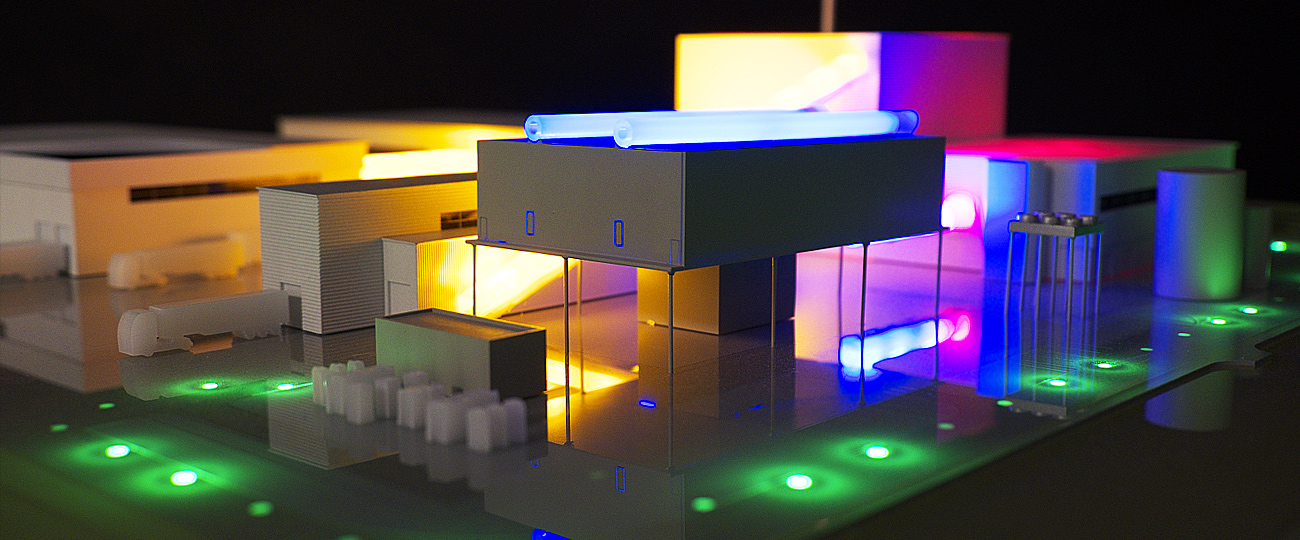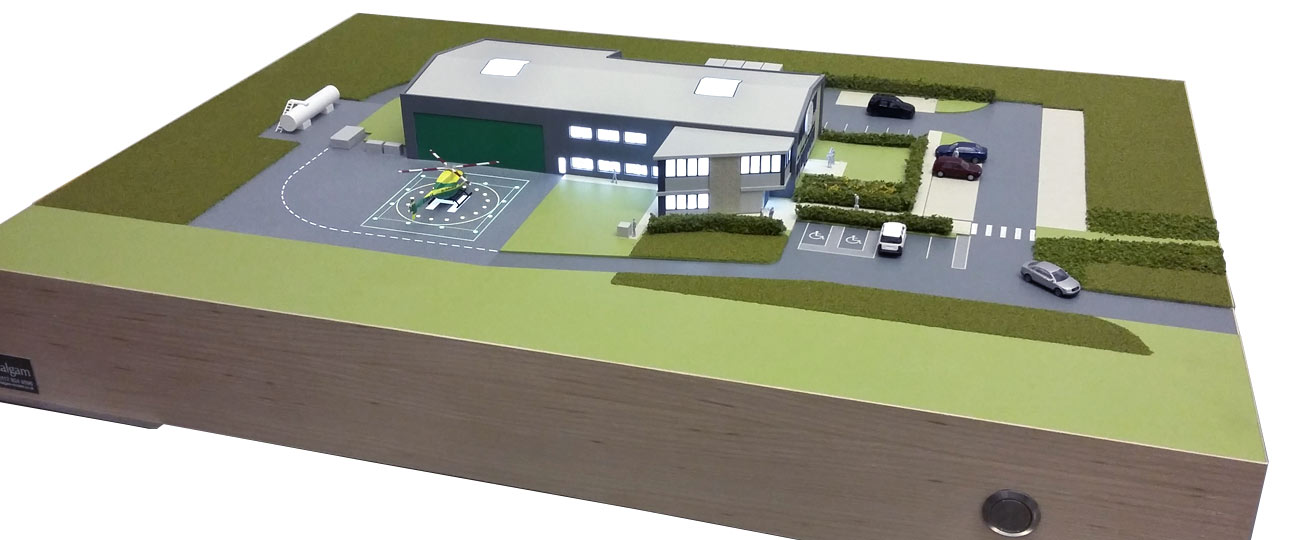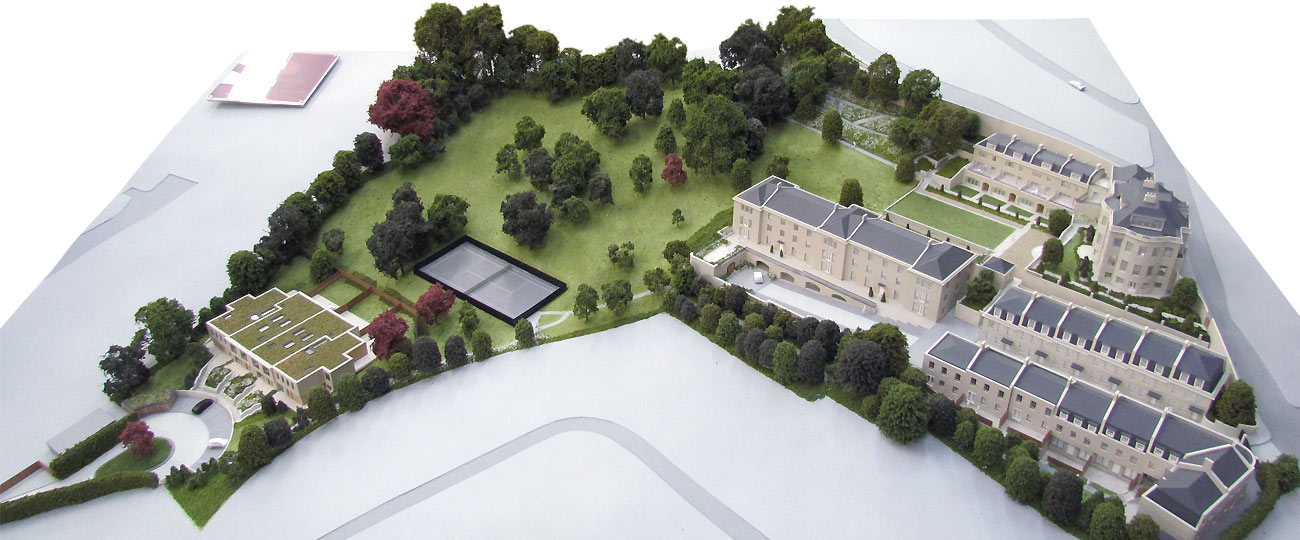This interactive architectural model of Sleaford Renewable Energy Plant, made for Crystalfish Communications and Eco2, is presented as a puzzle. Participants are encouraged to activate the separate stages of the biomass energy generation process by a row of buttons on the front panel. Only activating the stages in the correct order will result in energy being generated and fed out to the grid.
The interactive element of the model incorporates processors to digitally control the lighting and the whole electronic system was designed and wired together in-house. Some electronic issues we had to address included the securing and hiding of wires within the model – since some of the illuminated routes were suspended in the air on framed structures, we were limited in the objects we had to run wires through to effectively hide them.
To create a painted base that was artworked appropriately for an architectural model, yet protected from the interactions of participants, the road and landscape detail was backsprayed on a sheet of acrylic. Applying delicate road and grass paint effects to the underside of a solid transparent surface gave the model a good level of detail, yet ensured it was durable enough for public interaction.
Adding an interactive element to a model can greatly increase a user’s understanding of what the model represents, particularly if it allows them to see a process unfolding. While lighting can be used to accentuate architectural models, it can also be used to illustrate complex concepts that a static model would only partly address. A good example of this is the series of models made for Western Power Distribution, which demonstrate how factors such as temperature and time of day can have an impact on the efficacy of an electrical power network.






